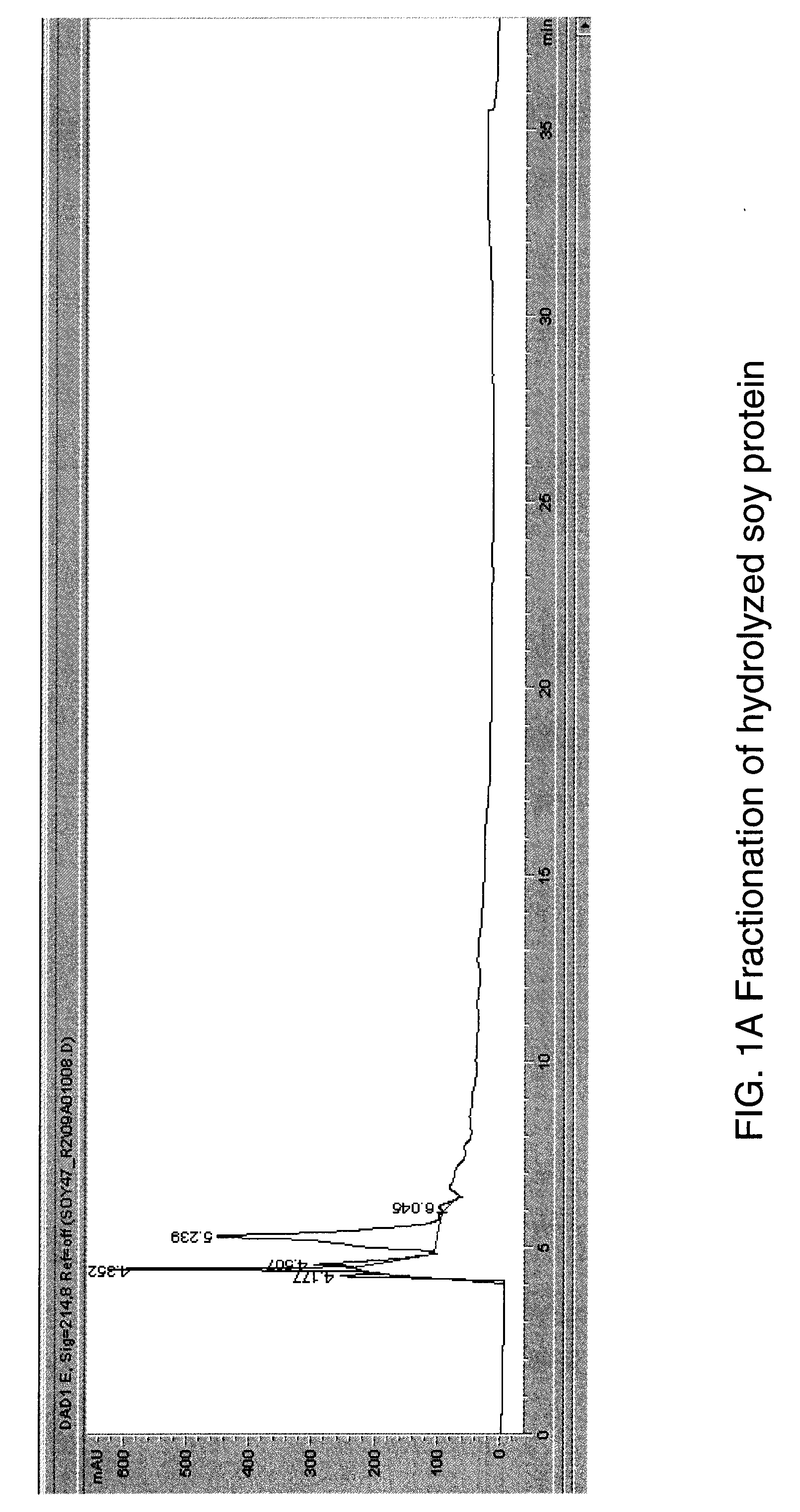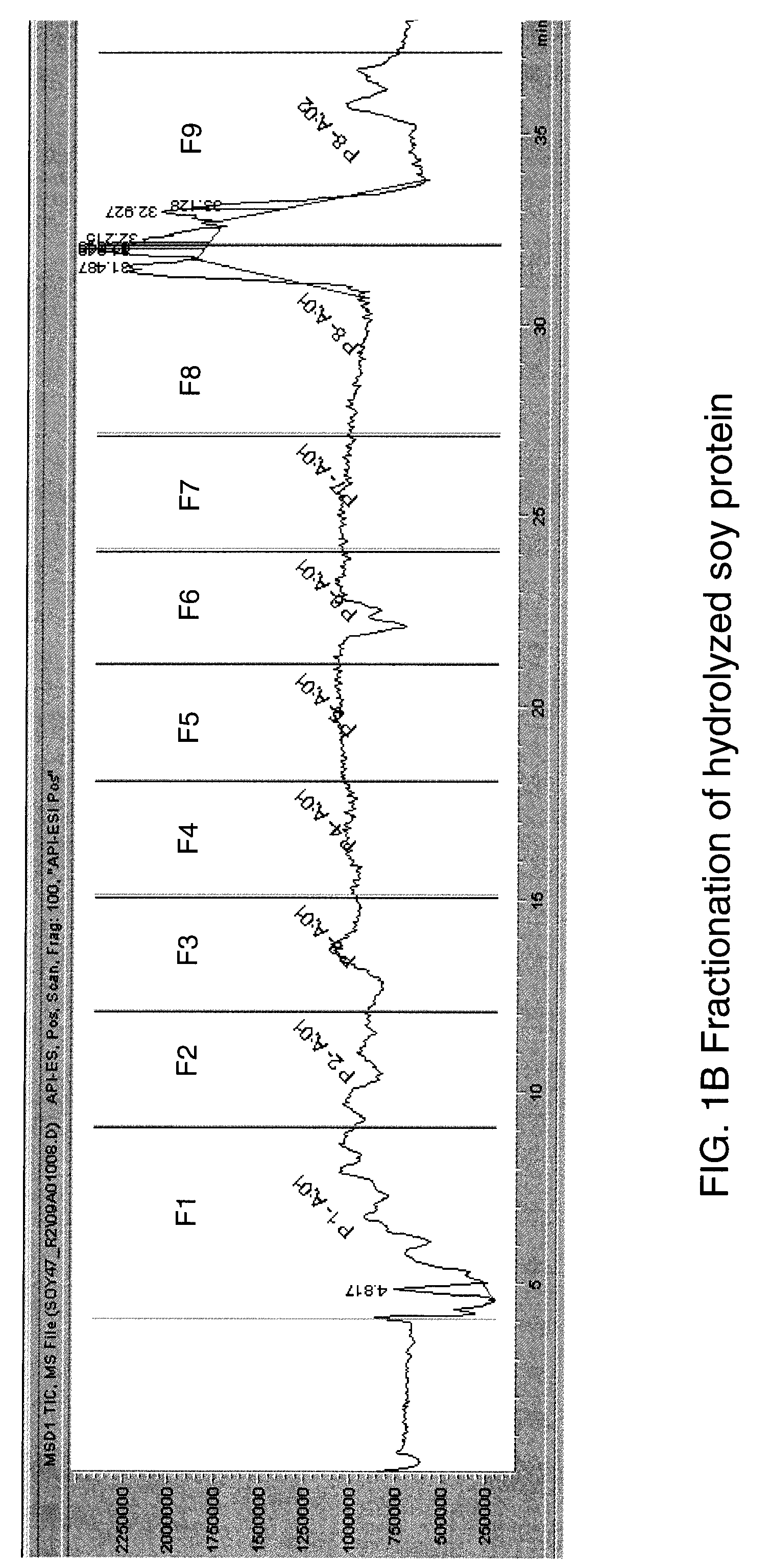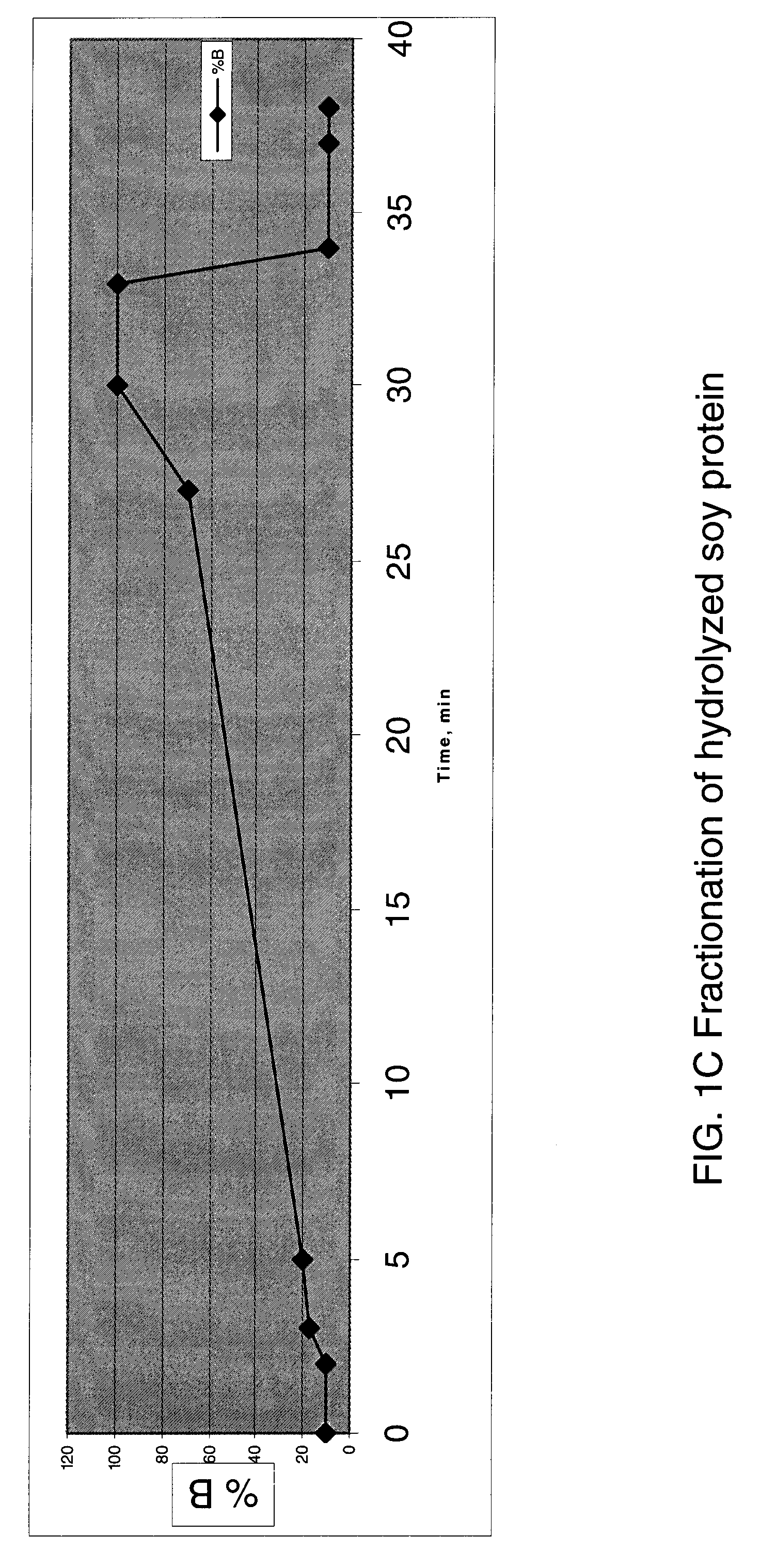Identification of bitter receptors for hydrolyzed soy protein
- Summary
- Abstract
- Description
- Claims
- Application Information
AI Technical Summary
Benefits of technology
Problems solved by technology
Method used
Image
Examples
example 1
[0218]The bitter fractions derived from hydrolyzed soy protein shown in Table 1 were used in a HEK293 cell based T2R assay as described in our previous patent applications the contents of which are incorporated by reference herein in order to identify human T2R receptors that specifically respond to bitter fractions derived from hydrolyzed soy protein and in order to identify specific bitter compounds contained therein that specifically activate these bitter taste receptors. Cell lines stably expressing each of the 25 human T2Rs were tested. against fraction 3. These tests revealed that HEK293 cell lines stably transfected with hT2R1 and hT2R67 specifically responded to this bitter soy fraction.
[0219]FIG. 2 shows responses of each human T2R to soy protein fractions 3 (concentration is equivalent to 5% of starting material). Each trace represents one T2R responding to fraction 3, and each receptor were tested in quadruplets. The screening was done on FLIPR using HEK293 cells stably e...
PUM
| Property | Measurement | Unit |
|---|---|---|
| Fraction | aaaaa | aaaaa |
| Concentration | aaaaa | aaaaa |
| Solubility (mass) | aaaaa | aaaaa |
Abstract
Description
Claims
Application Information
 Login to View More
Login to View More - R&D
- Intellectual Property
- Life Sciences
- Materials
- Tech Scout
- Unparalleled Data Quality
- Higher Quality Content
- 60% Fewer Hallucinations
Browse by: Latest US Patents, China's latest patents, Technical Efficacy Thesaurus, Application Domain, Technology Topic, Popular Technical Reports.
© 2025 PatSnap. All rights reserved.Legal|Privacy policy|Modern Slavery Act Transparency Statement|Sitemap|About US| Contact US: help@patsnap.com



